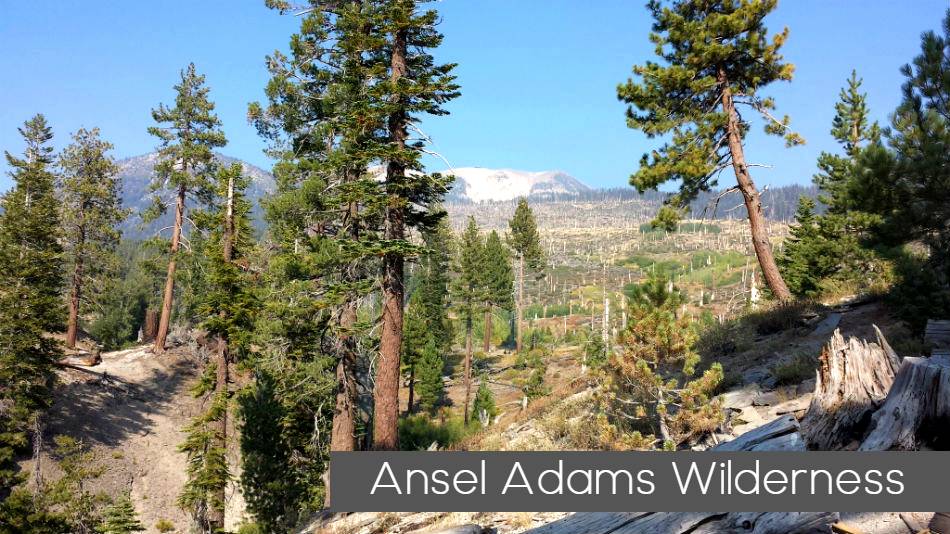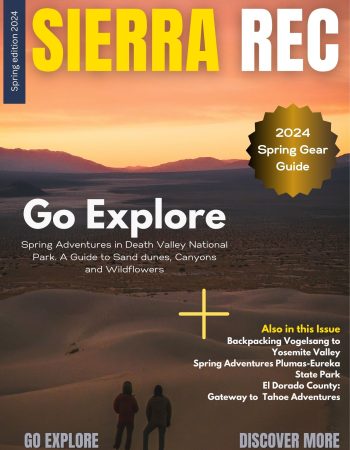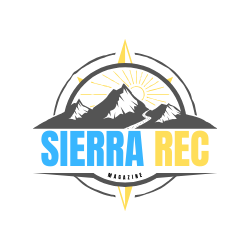Planning a Wilderness Trip
Welcome to the spectacular Sierra Nevada Wilderness, a vast network of untamed beauty stretching across the rugged terrain of California. Encompassing an impressive array of over 20 designated wilderness areas, the Sierra Nevada stands as one of the largest chains of wilderness in the lower 48 states.
From the iconic peaks of Yosemite National Park to the secluded valleys of Ansel Adams Wilderness, each area within the Sierra Nevada offers its own unique blend of pristine landscapes and unspoiled wilderness. Whether you’re exploring the shimmering alpine lakes of Desolation Wilderness or traversing the ancient forests of Sequoia-Kings Canyon, there’s no shortage of natural wonders to discover.
Join us as we venture into the heart of the Sierra Nevada, where adventure awaits at every turn and the beauty of the wilderness knows no bounds. Let’s embark on a journey to explore the wild and rugged landscapes of one of America’s most cherished natural treasures.
Taking some time to properly plan and prepare for recreating in a wilderness area can make or break your experience:
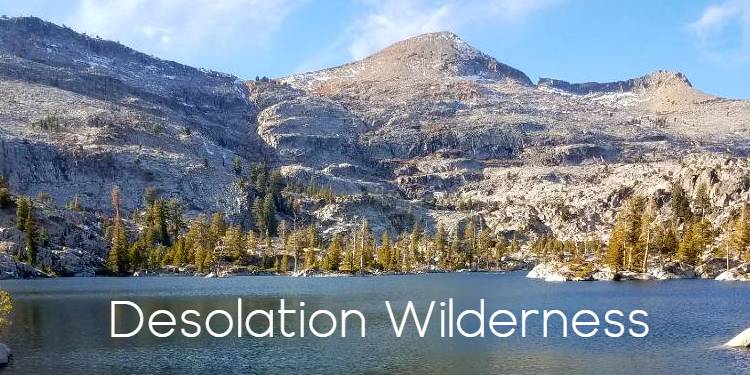
Sierra Nevada Wilderness Areas
- Ansel Adams Wilderness – Location: Eastern California, bordering Yosemite National Park to the north and John Muir Wilderness to the south. Distinguishing features: Dramatic granite peaks like Banner Peak and Mount Ritter, sculpted by glaciers, with sparkling alpine lakes and meadows. Home to Devils Postpile National Monument’s fascinating basalt columns.
- Bucks Lake wilderness – Location: Plumas County, California, north of Lake Tahoe. Distinguishing features: Largest wilderness in the northern Sierra Nevada, known for its expansive granite cliffs, ancient red fir forests, and the turquoise waters of Bucks Lake. Popular for backpacking, swimming, and fishing.
- Carson Iceberg Wilderness – Location: Alpine County, California, east of Yosemite National Park. Distinguishing features: Dramatic high-alpine terrain with granite cirques, tarns, and remnants of ancient glaciers. Home to rare Sierra Nevada bighorn sheep.
- Caribou Wilderness – Location: East of Lassen Volcanic National Park. Distinguishing features: The terrain is a volcanic plateau with 75% covered by water and conifer forests and the remainder being barren rock such as cliff faces, talus slopes and cinder cones. Most of this area has been preserved since 1932 which makes the Caribou Wilderness one of the few remaining pristine forests of the California Cascade region. There are 23 named lakes, innumerable unnamed ponds and tarns, cinder cones and volcanic buttes within the wilderness. (This Forest was severely destroyed by the Dixie Fire in 2021)
- Desolation Wilderness – Location: El Dorado County, California, South of Lake Tahoe. Access the West side of Desolation wilderness from the Crystal Basin and Loon Lake, to the west of the Sierra Crest. The East side of Desolation is accessed from South Lake Tahoe and the West Shores of Tahoe along California route 89 and 50. Distinguishing features: Scenic glacial lakes, granite domes, and open meadows dotted with wildflowers. Popular for day hikes, camping, and fishing.
- Dinkey Lakes Wilderness – Location: Fresno County, California, south of Yosemite National Park. Located near Shaver and Huntington Lake Distinguishing features: Lush meadows, granite peaks, and over 130 crystal-clear lakes, including the stunning Dinkey Lakes chain. Popular for backpacking, fishing, and swimming.
- Emigrant Wilderness – Location: Tuolumne County, California, north of Yosemite National Park. Distinguishing features: Granite cliffs, deep canyons carved by the Tuolumne River, and unique rock formations like “Natural Bridge.” Popular for hiking, rock climbing, and whitewater rafting.
- Golden Trout Wilderness – Location: Tulare County, California, southeast of Sequoia National Park. Distinguishing features: Home to the rare Golden Trout, found in high-altitude lakes and streams. Rugged terrain with granite cirques and meadows bursting with wildflowers in spring. Popular for backpacking and fishing.
- Granite Chief wilderness – Location: Placer County, California, southeast of Truckee California.. Distinguishing features: Granite Chief Wilderness encompasses glacier carved valleys, red fir forests, granite formations, and pristine mountain meadows. Several major streams drain the area, and the northwest section of the Wilderness is part of the French Meadows Game Refuge.
- Hoover wilderness – Location: Straddling two National Forests – the Inyo National Forest in the south (around Lundy Canyon and Highway 120-Tioga Pass road) and the Humboldt-Toiyabe National Forest in the north, including the Virginia Lakes area and beyond. Distinguishing features: Rugged terrain with granite peaks, deep canyons, and the unique Ansel Adams Gallery forest of ancient ponderosa pines. Popular for backpacking, horse riding, and hunting.
- Jennie Lakes Wilderness – Location: Tuolumne County, California, north of Yosemite National Park. Distinguishing features: A network of crystal-clear lakes, meadows, and granite boulders. Home to diverse wildlife, including deer, bears, and marmots. Popular for backpacking, fishing, and swimming.
- John Muir wilderness – Location: The John Muir Wilderness is approachable from both sides of the Sierra Nevada. Most visitors, however, enter from the east at various points along highway 395, from the town of Mammoth at the north end down to Whitney Portal above Lone Pine at the south end. See the sidebar for public transportation options. Distinguishing features: Largest wilderness area in the lower 48 states, with towering granite peaks like Mount Whitney, deep canyons like Kings Canyon, and diverse ecosystems from high alpine meadows to sequoia groves. Popular for backpacking, hiking, and climbing.
- Kaiser Wilderness – Location: Just North of Huntington Lake. Distinguishing features: The wilderness was named after Kaiser Ridge, which divides the area into two distinctly different regions. Most of Kaiser Ridge is 10, 320 feet high and Kaiser Peak provides a commanding view of the central Sierra Nevada. The northern portion is much steeper and more open than the more gentle terrain found in the southern portion of the wilderness.
- Mokelumne Wilderness – Location: Between Highway 88 and Highway 4 Scenic passes in the Sierra Nevada. Easy Access to the wilderness areas from multiple location near the Sierra Crest on both highways.. Distinguishing features: Dramatic volcanic and granite ridges, sculpted by glaciers, with deep canyons and pockets of ancient forests. Rich in botanic diversity and home to unique remnant species. Popular for hiking, backpacking, and rock climbing.
- Monarch / Jennie Lakes wilderness – Location: Fresno County, California, northwest of Kings Canyon National Park. Distinguishing features: A scenic blend of the high Sierra’s alpine lakes and meadows with the lower granite canyons and forested slopes of the Sierra Nevada foothills. Popular for backpacking, horseback riding, and fishing.
- Sequoia / Kings Canyon wilderness – Location: South Central Sierra Nevada, California, encompassing Sequoia and Kings Canyon National Parks. Distinguishing features: Home to the world’s largest trees, the majestic General Sherman Giant Sequoia, and iconic granite Moro Rock and the Kaweah divide. Diverse ecosystems range from giant sequoia groves to high alpine meadows and deep canyons. Popular for hiking, backpacking, and sightseeing.
- South Sierra Wilderness – Location: South Sierra Wilderness straddles the crest of the Sierra Nevada at the southern end of the range. Lush green meadows nestle between forested ridges, rolling hills and craggy peaks. The Pacific Crest Trail and the South Fork of the Kern River run through the heart of South Sierra Wilderness. The South Fork of the Kern River is a National Wild and Scenic River and a popular destination for fisherman. Elevations range from 6,100 feet near Kennedy Meadows to 12,123 feet at the summit of Olancha Peak.. Distinguishing features: Remote and rugged high-alpine terrain with granite peaks, glaciers, and tarns. Offers challenging backpacking and mountaineering experiences, with stunning views of the surrounding Sierra Nevada.
- Yosemite Wilderness – Location: 94 percent of Yosemite has been designated Wilderness, most of the land falling in the higher country outside Yosemite Valley. More than 700 miles of trails give access to the Wilderness. Distinguishing features: Iconic granite cliffs like El Capitan and Half Dome, cascading waterfalls like Yosemite Falls, and lush meadows dotted with giant sequoia groves. World-renowned for its diverse ecosystems, breathtaking scenery, and abundance of recreational activities. Fifty-four miles of the Tuolumne Wild and Scenic River flow through the park, one of the most exquisite mountain rivers. Seventy-eight miles of the Merced Wild and Scenic River also run in the park, dropping over some of the most fabulous waterfalls in America, and 22 miles of the Merced’s Wild and Scenic South Fork flow through extravagant canyons with precipitous rapids.
Some General Planning Tips
- Make sure the area you plan to visit fits your needs: Do you want to bring your dog? Is that route too challenging? Do you need to get a permit in advance?
- Be flexible: Have a backup option in case the area you planned for doesn’t work out. There are endless great wilderness trips in the Sierra.
- If possible, avoid the most popular areas on busy weekends and holidays. Midweek and during off-seasons popular trails can be almost deserted.
- Pick your gear carefully with safety and Leave No Trace in mind. Double-check our Backpacking Gear List as a starting point.
- Plan your food with bears and food storage in mind: Is everything going to fit in your bear canister?
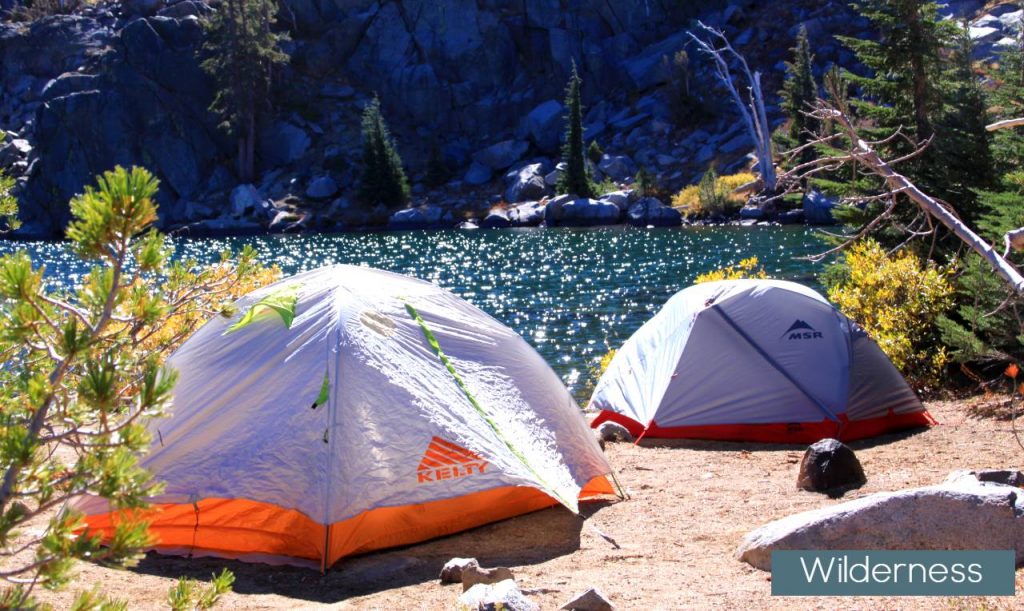
Protecting What We Enjoy
“We do not inherit the earth from our ancestors; we borrow it from our children.”
- Unknown (but clearly someone exceptionally wise)
Leave No Trace is a philosophy, an organization, and a set of techniques that enable us to enjoy wild places while preserving them. Here are the Seven Basic Principles:
1. Plan Ahead and Prepare
- Know the regulations and special concerns for the area you’ll visit.
- Prepare for extreme weather, hazards, and emergencies.
- Schedule your trip to avoid times of high use.
- Visit in small groups when possible. Consider splitting larger groups into smaller groups.
- Repackage food to minimize waste.
- Use a map and compass to eliminate the use of marking paint, rock cairns or flagging.
More on Planning from LNT.org
2. Travel and Camp on Durable Surfaces
- Durable surfaces include established trails and campsites, rock, gravel, dry grasses or snow.
- Protect riparian areas by camping at least 200 feet from lakes and streams.
- Good campsites are found, not made. Altering a site is not necessary.
- In popular areas:
- Concentrate use on existing trails and campsites.
- Walk single file in the middle of the trail, even when wet or muddy.
- Keep campsites small. Focus activity in areas where vegetation is absent.
- In pristine areas:
- Disperse use to prevent the creation of campsites and trails.
- Avoid places where impacts are just beginning.
More on Durable Surfaces from LNT.org
3. Dispose of Waste Properly
- Pack it in, pack it out. Inspect your campsite and rest areas for trash or spilled foods. Pack out all trash, leftover food, and litter.
- Deposit solid human waste in catholes dug 6 to 8 inches deep at least 200 feet from water, camp, and trails. Cover and disguise the cathole when finished.
- Pack out toilet paper and hygiene products.
- To wash yourself or your dishes, carry water 200 feet away from streams or lakes and use small amounts of biodegradable soap. Scatter strained dishwater.
More on Waste Disposal from LNT.org
4. Leave What You Find
- Preserve the past: examine, but do not touch, cultural or historic structures and artifacts.
- Leave rocks, plants and other natural objects as you find them.
- Avoid introducing or transporting non-native species.
- Do not build structures, furniture, or dig trenches.
More on Leaving Things Intact from LNT.org
5. Minimize Campfire Impacts
- Campfires can cause lasting impacts to the backcountry. Use a lightweight stove for cooking and enjoy a candle lantern for light.
- Where fires are permitted, use established fire rings, fire pans, or mound fires.
- Keep fires small. Only use sticks from the ground that can be broken by hand.
- Burn all wood and coals to ash, put out campfires completely, then scatter cool ashes.
More on Campfires from LNT.org
6. Respect Wildlife
- Observe wildlife from a distance. Do not follow or approach them.
- Never feed animals. Feeding wildlife damages their health, alters natural behaviors, and exposes them to predators and other dangers.
- Protect wildlife and your food by storing rations and trash securely.
- Control pets at all times, or leave them at home.
- Avoid wildlife during sensitive times: mating, nesting, raising young, or winter.
More on Wildlife from LNT.org
7. Be Considerate of Other Visitors
- Respect other visitors and protect the quality of their experience.
- Be courteous. Yield to other users on the trail.
- Step to the downhill side of the trail when encountering pack stock.
- Take breaks and camp away from trails and other visitors.
- Let nature’s sounds prevail. Avoid loud voices and noises
More on Being Considerate from LNT.org

What to Pack…
Everyone brings different equipment when they head into the Sierra Wilderness. Your experience level and the type of trip you’re planning will play a huge role in determining what gear you bring, but here are some basics to consider when packing for any overnight wilderness trip in the Sierra.
CLOTHING
- Hiking boots – should be broken-in and waterproofed.
- Rain jacket and pants (Optional in the Sierra)
- Thin wool or synthetic pants
- wool sweater, lightweight down or synthetic jacket
- Wool socks (Pro Tip Bring clean pair for sleeping on cold nights)
- Liner socks (if you like liners)
- Synthetic underwear, synthetic t-shirt (no cotton)
- Quick drying shorts or pants
- Wool or synthtic cap
- Wool or synthetic gloves or mittens
- Lightweight hat with brim
- Bandanna
EQUIPMENT
These items may be crucial to a great trip, but they are also where many people cut weight for lighter trip. Evaluate items based on your willingness to carry and the importance for safe and fun experience.
- Backpack with pack cover
- Map of your route, and compass or GPS (and the ability to use them)
- Appropriate food for your trip, plus some extra
- Bear canister allowed for use in the area you’re visiting
- Sleeping bag and waterproof stuff sack
- Tent or tarp with ground cloth or Hammock
- Sleeping pad
- First-aid kit – don’t forget moleskin
- Stove, cook-kit, mug, utensils, and fuel
- Matches or lighter
- Lightweight eating gear – cup, bowl, spoon.
- Flashlight or headlamp and extra batteries
- Pocket knife or multi-tool
- Garbage bags – Leave No trace!
- Water bottle and water treatment or filter
- Collapsable water container for camp
- Mosquito repellant or bug net
- Chapstick and sun screen
- Toilet paper in a plastic bag
- Trowel for digging cat holes (for human waste)
- Toiletries – toothbrush/paste, glasses or contacts, personal medications
- Repair kit
- Decent sunglasses
- Watch
- Duct tape
- Maybe some more duct tape
OTHER IDEAS:
- Sandals or camp shoes- Bringing camp shoes changed backpacking for me to a leisure activity.
- Journal and pen/pencil
- Fishing gear with a fishing permit
- Camera
- Binoculars
- Hiking poles
- Book or magazine
Some Important Wilderness Tips:
Know what you’re getting into and be realistic with your abilities: If you are not an experienced wilderness traveler, keep your ego in-check and be conservative when it comes to new adventures. If you are an experienced wilderness user, still keep that ego in-check and know your own limits.
Research the area you’re planning to visit: Talk to people who have been there before, ask rangers familiar with the area about local concerns, carry the appropriate maps, and know how to read those maps.
Tell someone where you’re going: Make sure you tell someone exactly where you’re headed and when to start worrying about you, especially if you’re hiking alone.
Bring the appropriate equipment, and know how to use it: Every wilderness experience requires slightly different gear, but wherever you’re headed here are some basic items that are always a good idea to carry:
- Flashlight or headlamp and extra batteries
- Rain/wind/sun/cold weather gear (light layers and sunscreen)
- Plenty of water and/or a water filtration system (consume at least 3 liters of water per day per person)
- food
- pen/paper
- whistle, signal mirror
- First aid items (including your medication and an emergency blanket)
- Decent footwear
- Map, compass, and GPS device (optional) Make sure you know how to use them!
- Watch
- Knife
- Firestarters (matches, lighter, fire ribbon, etc.)- Many wilderness areas in the sierra don’t allow fires. So you don’t need this if you are not packing a stove.
Source: Sierrawild.gov


